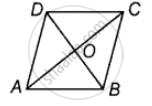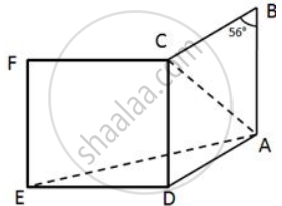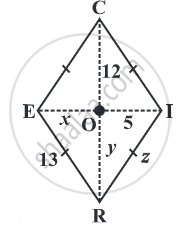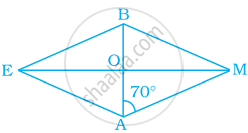Advertisements
Advertisements
Question
The diagonals of a rhombus are 8 cm and 15 cm. Find its side.
Solution
Given, AC = 15 cm, BD = 8 cm
Since, the diagonals of a rhombus bisects each other at 90°, therefore in the ΔAOB, we have
AB2 = OA2 + OB2
⇒ AB2 = `(15/2)^2 + (8/2)^2`
⇒ AB2 = (7.5)2 + (4)2
⇒ AB2 = 56.25 + 16
⇒ AB2 = 72.25
⇒ AB = `sqrt(72.25)`
⇒ AB = 8.5 cm
Since, it is a rhombus, the length of each side is 8.5 cm.
APPEARS IN
RELATED QUESTIONS
In the following figure, ABCD is a rhombus and DCFE is a square.
If ∠ABC =56°, find:
(i) ∠DAE
(ii) ∠FEA
(iii) ∠EAC
(iv) ∠AEC
Prove that the quadrilateral formed by joining the mid-points of consecutive sides of a rectangle is a rhombus.
Prove that the quadrilateral formed by joining the mid-points of consecutive sides of a rhombus is a rectangle.
Prove that if the diagonals of a quadrilateral bisect each other at right angles then it is a rhombus.
Prove that the area of a rhombus is equal to half the rectangle contained by its diagonals.

Diagonals of a rhombus are equal and perpendicular to each other.
A rhombus can be constructed uniquely if both diagonals are given.
In rhombus BEAM, find ∠AME and ∠AEM.

